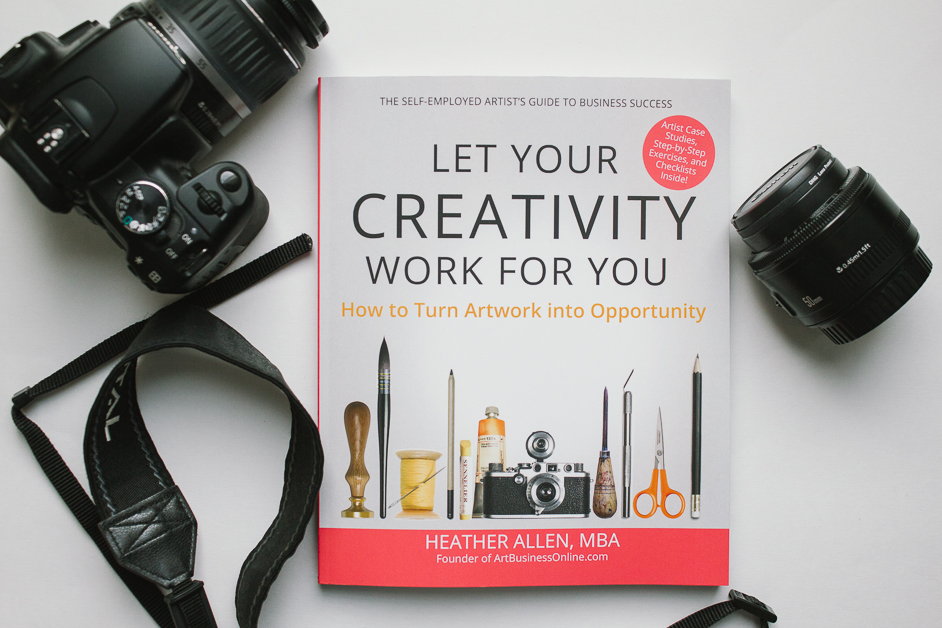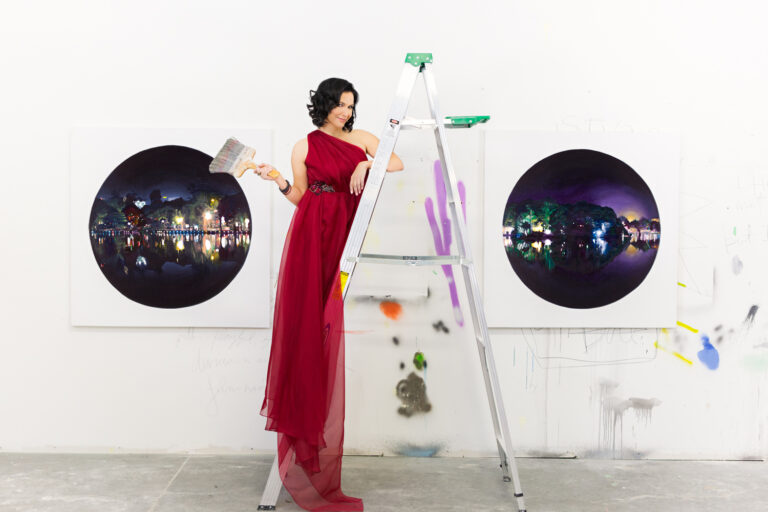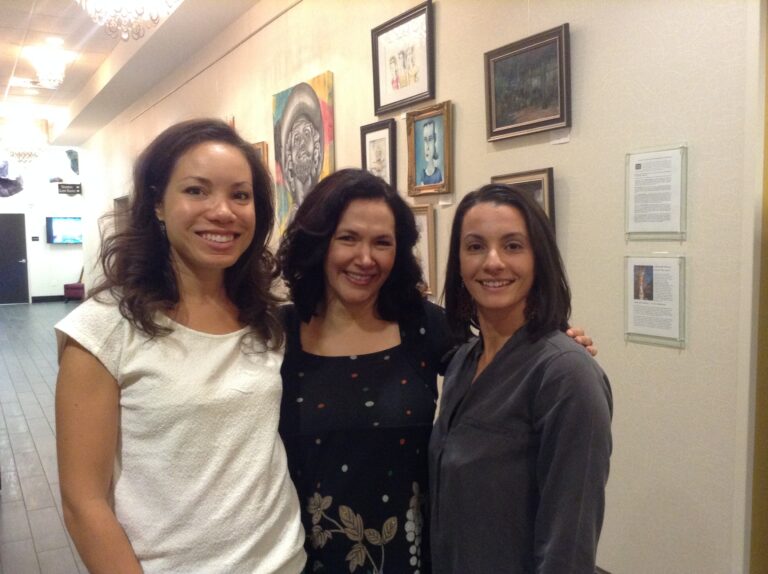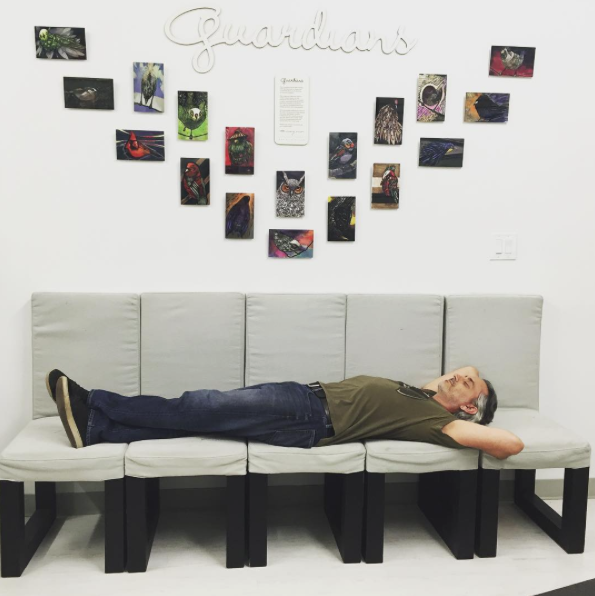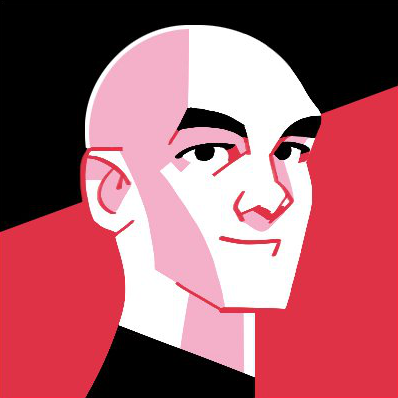 Kyle T. Webster is an illustrator, designer, digital product maker, and slightly better-than-
Kyle T. Webster is an illustrator, designer, digital product maker, and slightly better-than-
He is now officially dipping his toe into the wonderful world of writing and illustrating children’s books, as well. Kyle has collaborated with The New York Times, The New Yorker, TIME Magazine, NIKE, NPR, and many other fun clients. He is a “first order” creative who loves his job.
When you witness someone totally immersed in their element, being exactly who they are intended to be and doing exactly what they are intended to do, it’s inspiring. It’s magnetizing.
But, we all know that it takes guts to say, “Here I am world! This is what I want to share with you.” There’s some major vulnerability attached to being yourself and putting your creative work out there. But that honesty is exactly what attracts people and opportunities. It’s also what is 100% required to create a domino effect in one’s creative career.
“When we realize that our true Self is one of pure potentiality, we align with the power that manifests everything in the Universe.” —Deepak Chopra
Without necessarily meaning to inspire people to be their own creative, wonderful selves, this was Kyle T. Webster’s message earlier this year during his presentation at a creative entrepreneurship conference I attended. He spoke about setting up a domino effect in his career. And I, sitting in the audience, couldn’t help thinking to myself: “Are you kidding me! This is exactly what my readers need to hear!”
This is how Kyle introduced himself to us:
Then, he defined what it means to be a “first order” creative: someone who directs and authors his or her own creative content in his or her own style to create opportunity. Bingo.
This “first order” creative philosophy has helped Kyle churn his creativity into an abundance of opportunities to add value into creative marketplaces. Other people have picked up on his talent and style too. Kyle has illustrated drawings for brands like The New Yorker, Time, IDEO, NPR, The Atlantic, Microsoft, ESPN, Krispy Kreme, The Wall Street Journal, The Washington Post, Entertainment Weekly, Nike and many more. He worked hard to set himself up for success. And has been enjoying the domino effect ever since.
How do you create a domino effect in your career? By diversifying your offerings and seeing yourself as a creative entrepreneur. A good place to start is with this post written by John Hendrix, an illustrator from my hometown—St. Louis. If you have time, read the whole thing. If not, jump to “2. CREATE YOUR OWN CONTENT.” He goes into more detail on “first,” “second,” and “third order” creatives.
Next, read my interview with Kyle T. Webster. The “first order” creative philosophy guides Kyle’s business and project interests. And, it diversifies his creative offerings. Here’s how:
Q: Kyle, let’s dive in at the tipping point of your career, around the time you discovered John Hendrix’s “first order” creative philosophy. What impact did it have on you?
John gave a talk once where he described his own path toward becoming a first order creative—he now mostly writes and illustrates his own material. I read a transcript online a couple of years ago and realized that I was on the same path without consciously aiming for the title of a “first order” creative.
At that moment, I made it my top priority to create new income streams from self-generated projects. I had already made a few apps and opened a print shop. I ramped up my marketing for those products, added to them, began finally writing down and sketching all of my children’s book ideas that had been piling up, and set out to make a premium set of Photoshop brushes.
Once I discovered how much more rewarding it was to be able to turn my own ideas into the things that sustained my business—without relying on client commissions and client ideas—there was no turning back.
Q: You diversified your creative reach through smartphone app creation, but you say that coding and programming aren’t your strengths. How did you breach this challenge to bring new products to the marketplace?
Partnerships are wonderful things for creative people, provided they can find reliable professionals with good communication skills and similar work habits.
My app business partner lives in Ireland, but we work so well as a team that I can hardly believe we have never met. We use Skype and email to collaborate on our projects, and it all goes smoothly. If you can’t complete a project on your own, there is certainly nothing wrong with finding somebody to help out, and the Internet makes that very easy.
Q: In what other ways do collaboration and partnership play a role in your business?
Art directors and creative directors expect me to be a good collaborator—this means I can take client direction and execute what is asked, but I am also confident enough to propose different solutions, wear different hats, and work around unforeseen obstacles.
Sometimes, being a good collaborator means not accepting a project at all. A client will respect your honesty if you tell them, up-front, that you are not the right person for a job, rather than trying to fake your way through it or trying to squeeze it into an already full schedule.
Q: How important is it for artists to step outside of their studios to find opportunity through engaging with the world?
Vitally so. Working in a vacuum rarely leads to the best possible results, except in short bursts.
Q: How do you discriminate between “good” opportunities and those that aren’t worth pursuing?
Budget, my work schedule, and personal interest in a project are the three factors that determine whether or not I accept a job. Two out of these three must be right, or experience has taught me that it is probably best to pass.
If I am not creatively excited about the work, but the budget is good, and I have the time to accept the project, then I am happy.
If the budget is not great, but I am creatively excited about the project, and I have time, then I am happy.
If the budget is great, along with my personal interest, but I’m already swamped, I regrettably have to pass. I have learned that saying, “No,” more often leads to [other opportunities for] career growth, though it is always a hard thing for a freelancer to do.
For the full interview with Kyle T. Webster, and to learn more about how to turn your artwork into opportunity, purchase a copy of my book.


